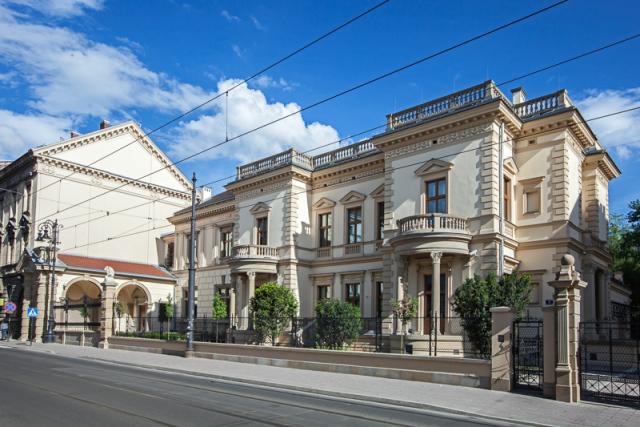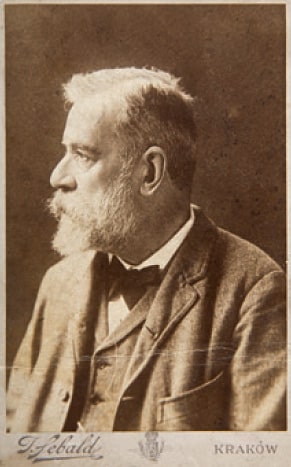Contents
Emeryk Hutten-Czapski
Emeryk Hutten-Czapski was born in 1828 into a wealthy aristocratic family in Poland-Lithuania. He was very well educated, knew seven languages and was an heir to a huge fortune. Since Poland was at the time under Russian occupation, Emeryk Hutten-Czapski was developing a bright career as a high official in the administration of the Russian Empire.
Living in his manor in Stankow in the territories of Belarus, he began to collect Russian and Polish coins, medals and orders, military, glass, textiles, paintings, old prints and antique books. To accommodate his large collection, Emeryk Hutten-Czapski reconstructed his manor house and built extra rooms. He was also scrupulously documenting all of the objects. He wrote five volumes on Polish coins (Catalogue de la Collection des Médailles et Monnaies Polonaises), a publication that is until this day an invaluable and primary source for numismatic research.
In the 1880s situation of Polish people in the Russian Empire was becoming unbearable. Emeryk Hutten-Czapski resigned from all of his work as a Russian official. He decided to move to the region of Galicia, territories of Poland under Austrian occupation, where he could hope for safer life.
Numismatic collection
In 1894, Emeryk Hutten-Czapski settled in Krakow with his family and his collection. He bought a town palace near the Old Town of Krakow. Unfortunately, Emeryk Hutten-Czapski was unable to move all of the objects he had collected over the years because Russian authorities forbid it. Only memorabilia connected to Poland could be moved to Krakow, and all of those with Russian provenance had to be left in Stankow. Nevertheless, the collection was so large that it soon became clear that the palace is too small to house it. Emeryk Hutten-Czapski decided to add a pavilion to the palace that was to serve as an exhibition space for his collection. Two years later, however, Emeryk Hutten-Czapski died and did not fulfill his dream to display his collection to the public.
Construction works of the pavilion finished after Emeryk Hutten-Czapski had died. His wife and his sons were aware of his dream to create an exhibition in the pavilion. At first, they created a private museum but in 1903 it was given to the city of Krakow. The National Museum in Krakow gained possession of the collection. The museum was established in the family palace.
Emeryk Hutten-Czapski Museum
The museum displayed a splendid collection of numismatics, old prints, books and memorabilia as its permanent exhibition. It had been open for public until 1939, after which it was closed for over 70 years.
Today, the Emeryk Hutten-Czapski Museum is open once again as a branch of the National Museum in Krakow. Its numismatic collection now consists of over 100,000 objects. 2,500 of the most valuable can be admired at the exhibition that occupies almost the entire building.
The museum is now one of the most important institutions in Poland that concentrate on numismatics. It conducts exhibition projects and research, workshops, conferences and educational activities for children and adults.
Tickets and opening hours
Opening hours:
| Monday | Closed |
| Tuesday – Saturday | 10 a.m. – 6 p.m. |
| Sunday | 10 a.m. – 4 p.m. |
The museum is closed for visitors on: January 1st, January 6th, Easter Sunday, May 1st (Labour Day), Corpus Christi, August 15th, November 1st (All Saints’ Day), November 11th (Polish Independence Day), December 24th and 25th. Limited opening hours (10 a.m. – 1 p.m.) on Holy Saturday, Easter Monday, Mat 3rd, December 26th and December 31st.
Ticket prices:
| Regular | 9 PLN |
| Reduced | 5 PLN |
| Family ticket (up to 5 persons) | 19 PLN |
| Regular group ticket (groups of 15 or more) | 7 PLN/person |
| Reduced group ticket (groups of 15 or more) | 4 PLN/person |
| Children up to 7 years old | Free admission |
| Students up to 26 years old | 1 PLN |
| Free admission to the permanent exhibition on Sunday. | |

